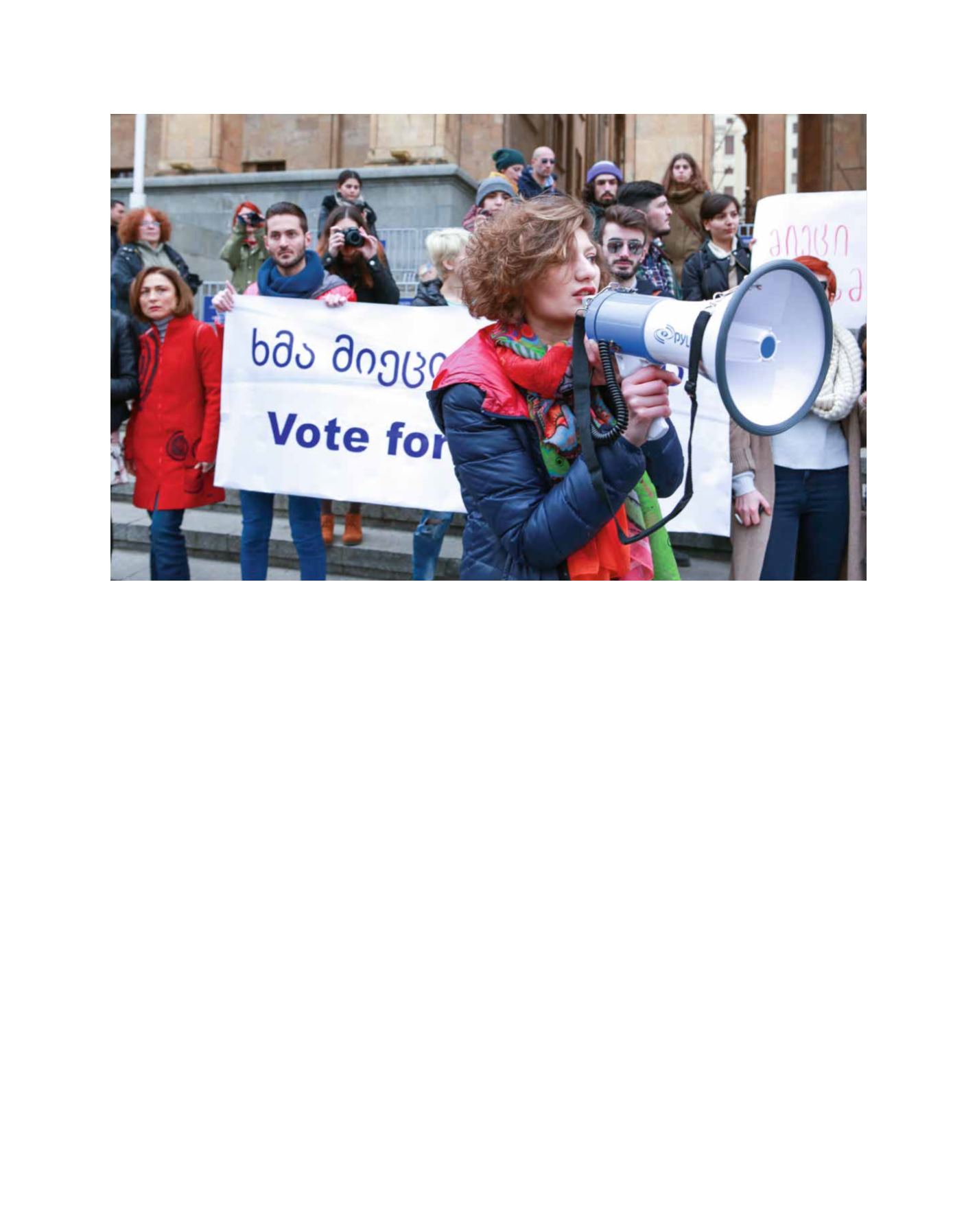

[
]8
A B
etter
W
orld
movement, including the refugee crisis in the Middle East and in
Europe, the dire consequences of climate change, conflict-related
violence and widespread instability in many regions.
Women make up the majority of those living on less than
two dollars a day and, in some regions, account for 81 per
cent of the unemployed. Where they do earn a wage, women
are paid an average of 24 per cent less than their male coun-
terparts for the same work. A study of more than 60 countries
reveals some sobering results: despite an increase in women’s
and girls’ education, and further access to employment oppor-
tunities, neither of these improvements have translated into
higher or equal compensation.
Women and girls remain underrepresented in science and
engineering, and the unequal burden of care work in the home
often takes a long-term toll on their educational opportunities.
Deficiencies such as lack of sanitation in schools defy local
taboos and pose a clear challenge for menstruating adolescent
girls, preventing them from completing their studies.
One third of the world’s burden of disease for women
between the ages of 15 and 44 years is related to poor sexual
and reproductive health. Maternal deaths have fallen by half
since 1990, but every year, some 300,000 women still die
during pregnancy and childbirth – the second leading cause
of death among women of reproductive age.
Violence, in its various pernicious manifestations, also
disproportionately impacts women and girls, with one in three
women experiencing violence in her lifetime globally. Harmful
practices such as female genital mutilation (FGM) have injured
at least 200 million girls and women in 30 countries, and the
continuation of child, early and forced marriages is expected
to affect more than 140 million girls between 2011 and 2020.
Priorities for action
These realities do not define women and girls; they define
our agenda for action. Agenda 2030 has set a clear expiry
date for gender inequality, and it is within our generation. At
UN Women we call the drive for equality between men and
women, boys and girls, ‘Planet 50-50 by 2030’.
Using the SDGs as our roadmap, we now turn to imple-
mentation of the 2030 Agenda. This means going beyond our
traditional allies and reaching out to engage new stakehold-
ers, including the private sector, and new groups of people
such as youth, faith-based groups, and bringing men and boys
strongly into the framework for action.
Policies and legislation are another crucial part of the
equation. In 155 countries around the world, there is at
least one law impeding women’s economic opportunities.
These include laws that restrict women from doing certain
jobs, from owning or inheriting property, or opening bank
accounts in their own name – all significant impediments to
women’s livelihoods. At the same time, in countries with more
gender-equal laws, more girls attend secondary school relative
to boys, more women work or run businesses, and the gender
wage gap is smaller.
Today, globally there are more women in public office than
at any previous point in history. Over 10,300 women serve
as national parliamentarians, making up over 22 per cent
of parliamentarians worldwide and more than doubling the
Image: UN Women/Maka Gogaladze
People mobilized by a women’s movement marched in Tbilisi and other cities in 2015 to support the introduction of mandatory political quotas for women in Georgia
















